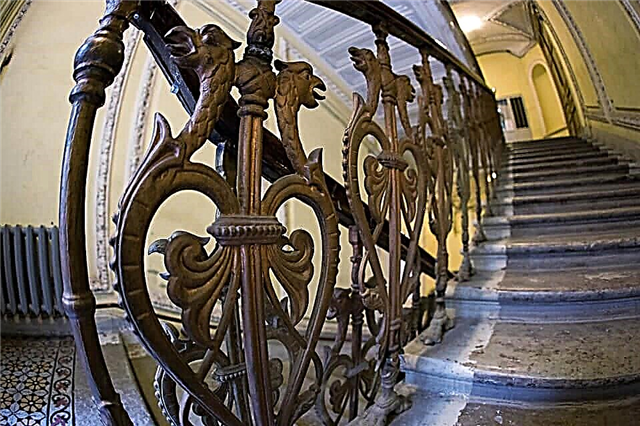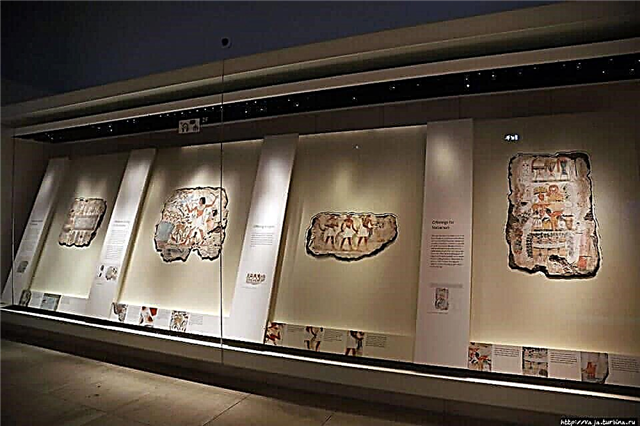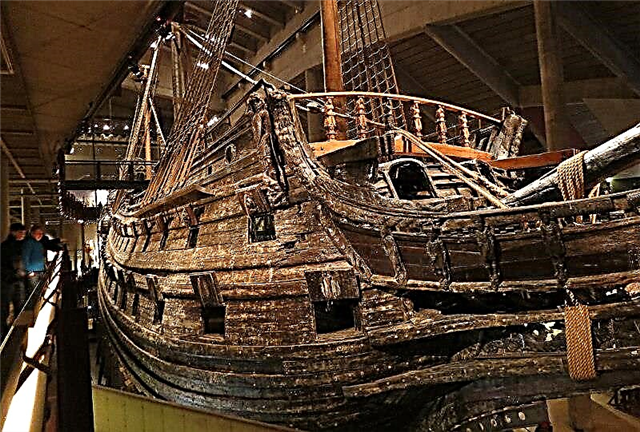Since the time of the Vikings, the Scandinavian countries have been famous for their achievements in the field of shipbuilding and navigation. The ancient traditions of conquering the open spaces of the sea are well entrenched here and have developed to the present day. It is no coincidence that the Norwegian Amundsen visited the South Pole for the first time, and his fellow countryman Nansen brought humanity closer to the North Pole.

Sweden, which did not have its own fleet until the 16th century, also made a significant contribution to shipbuilding. However, under King Gustav Vasa, a flotilla of 30 rather powerful ships was created.
An example of a huge wooden warship is the royal galleon Vasa, conceived as the flagship of the Swedish fleet and launched on August 10, 1628. It was built by order of Gustav II Adolf, who was directly involved in the design of the ship through orders given to the chief civil engineer Hubertsson, who supervised 400 workers.
Description of the ship

Vasa - the only surviving sailing ship of the 17th century in the world, had incredible dimensions: the height of the masts was 52 meters, the ship weighed 1200 tons. Since the ship was a military one, the king gave an order - to install as many cannons as possible: on two massive decks, 63 bronze cannons were installed as a symbol of the military might of Sweden.
Ship wreck

Miscalculations in the size and design of the ship played a fatal role in its fate: immediately at the exit from the harbor it was blown to one side by the wind, and the water gushing through the sides flooded the ship. At this time, the crew and passengers were invited to the galleon's solemn descent. Some of them sank along with the ship.
The ship sank 30 meters to the gulf, and the masts stuck out above the water like sentry posts, thanks to which 53 cannons were lifted from the Vasa. This operation cost incredible human efforts and even lives, but that was the order of the king.
Raising a giant ship

At that time, the lifting of such a colossus was technically impossible: the masts were cut off from the ship, and the ship remained at the bottom for more than 3 centuries. The story with the largest sailing ship of the 17th century was forgotten for a long time, but in 1956 the meticulous explorer of the underwater depths, archaeologist Anders Fransen discovered the remains of the ship. After a 5-year survey of the vessel, he organized an active recovery campaign; the decision was made at the state level, and with the support of the royal power in 1961, numerous parts and the hull of the ship were freed from silt and raised up.
This event became a sensation not only for Sweden, but also for other countries: the rise of the remains of a huge sailing ship attracted the attention of specialists and ordinary people. In April 1961, a new life began for the infamous ship. The restoration has been going on for almost 30 years, over which dozens of engineers and skilled workers have worked, restoring a sample of a ship that has fallen victim to royal vanity. For several years, the whole tree was impregnated with polyethylene glycol, which prevents it from cracking when it dries. Then the restored 700 sculptures and hundreds of other wooden decorations were fixed in their original places.

After completion, it was decided to make a museum-ship, a three-story building was erected over the ship, the area of which allowed Vasa to freely bypass from all sides. In 1990, the Vasa Museum was officially opened on the island of Djurgården, which has become a place of active visits by tourists and locals.
Along the way, we suggest you read the article on purchasing cheap air tickets.
The main exhibits of the museum
The general view of the sailing ship is striking in size and luxury of decoration, which testifies to the truly royal scope in its manufacture. All details are executed with extraordinary artistic grace, the bow of the ship is decorated with magnificent ornaments and bronze sculptures depicting sea goddesses. Showcased here are 6 unused sails recovered from the silt and exemplary of the sails of the time.

On the sides there are figures of biblical characters, gods of Ancient Greece, lions, Roman emperors and various attributes of royal power, personifying its power and culture during the reign of the Vaz dynasty. Even on the shutters covering the square portholes, spectacular lion's faces are filigree carved. Gilding and red paint have been preserved on many details of the jewelry, which testified to the bright coloring of the legendary ship.
The rich interior decoration of the ship was a real luxurious palace with comfortable cabins and common rooms for passengers. The skeletons of the dead people, placed under a glass sarcophagus, are carefully preserved for posterity; the crew's working tools: axes, saws, chisels, hammers - everything that the crew had to use while sailing.

The Vasa ship is a living testimony of the 17th century era, and the museum's curators are faced with the task of preserving it for many years, so now all methods are being taken to prevent damage to the giant. The museum is visited by millions of people who want to see firsthand the priceless monument of a bygone era.











